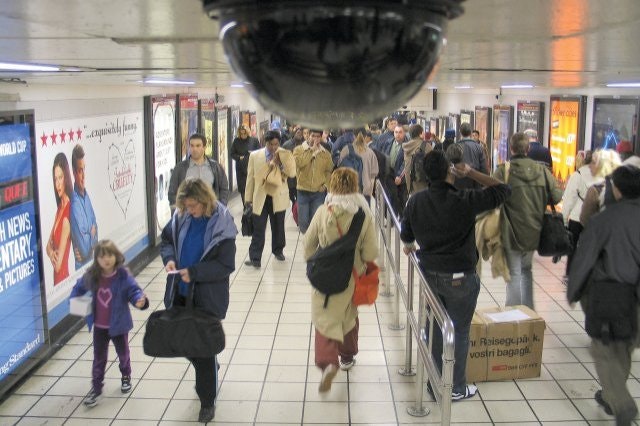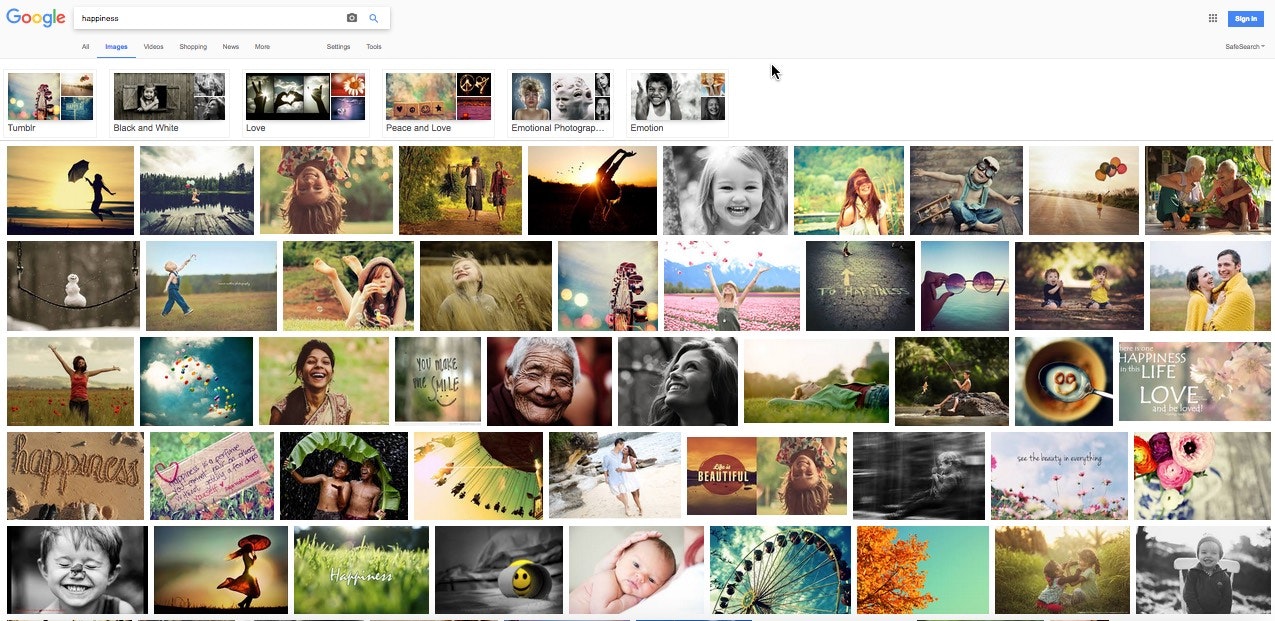The Mass Image
I wrote in my previous post that individual images use the unavoidable division between being and appearance to create negative images of the world, and thereby to create glimpses of happiness as the opposite of the world we inhabit. That seems to be as true of individual prints or photographs as it is of unique paintings and drawings. But can the same be said of images in the mass? The question arises because, in the age of social media, not only are there even more images than before, but they are now supported by a vast machine for their circulation and dissemination. Since the age of the Box Brownie, there have always been too many images for any one person to see them all. Back then, in the 20th century, people believed in the idea of a private collection, an album for the use of the family and physically close friends, and in photos as very personal gifts (the mythic aura of the signed photos handed out by movie stars). Private pictures were by definition not available to just anyone. But uploaded photos are, by definition again, open to everybody. This new digital proliferation of images is of a different kind to their industrial-scale production observed and analysed by Walter Benjamin.
The fact is that anyone can look at your photos, but not everyone does. And this brings me back to a point made earlier in this series. Who (or what) is the subject for whom we show these images? From my perspective, when I upload a picture, I am thinking of the friends and family who might be interested. There’s often a slight frisson when I realise that relative strangers are also looking, even commenting, and if I’m honest they too form part of my imagined audience. The actuality is rather different. My friends may or may not log on, and my posts may or may not turn up in their social media feeds. But there is something that observes each and every image loaded onto these platforms: the platforms themselves.
Some of our older images were sacred. Relatively few people saw them: think of the famous gargoyles of Notre-Dame de Paris, made only to be seen by God; or of the art of tombs, made to be seen only by the Pharaoh in the afterlife. When perspective, the optical system now engineered into all our lenses, first appeared, it too was a sacred technology. It showed the world as God saw it. But very swiftly, in the great humanist tide of the Renaissance, it became an engine for constructing images to be seen by human individuals, at a time when the individual was in process of being invented. You could say the subject of perspective was ultimately the humanist ideal, Man (and the gender was at the time pretty specific) – a universal category of being, but nonetheless framed as the universal type of the individual that each observer was challenged to become. The new world of data visualisation that dates back to the late 18th century established another, different viewer: no longer individual, but rather the cool, objective, and above all collective subject of Science.
In a parallel movement, early oil or easel paintings were designed for the privileged enjoyment of the few – the idea of a public gallery was a late arrival. At the same time, however, the printmaking revolution of the 15th century made possible the large-scale circulation of images that, by the 19th century and with the invention of lithography and the rotary press, enabled the mass circulation of images. This is the moment when a new audience was formed. Partly still structured by the individual subject of perspective, and partly by the sociology of mass distribution, ‘anyone’ could see an image. This ‘anyone’ is any person, it doesn’t matter who. But it is still also any one person: the mass audience is not a crowd acting in unison but an atomised aggregation of individuals, each responding in partially unpredictable ways to the visual wealth on offer. This anonymous, multiple and yet significantly individualised mass audience was the subject that the mass circulation of half-tone printed photographs was designed to serve.
 CCTV surveillance on the London Underground
CCTV surveillance on the London UndergroundToday probably the most numerous sources of images are closed-circuit television (CCTV) cameras. The vast majority of the images they record are never seen by a human observer. They go straight into storage as records. But this brings about strange paradoxes. The any who doesn’t matter is now not exclusively (and perhaps not even) human; and its status as one is also in doubt – we imagine entities like The State or The Network as the ones-who-know, but then we can’t be sure whether there is just one state, just one network, or many of both; and if so, whether they are truly discrete from one another or, either voluntarily or through hacking, open and porous. There is also the strong possibility that the humans who do get to look at CCTV images are trained and employed to act as functionaries of institutional apparatuses, and to that extent are no longer entirely human. We can no longer be sure who or what is the ‘anyone’ who sees. Because it is a hybrid of machines and humans, I call this apparatus cyborg. Where we used to imagine cyborgs would look like Arnold Schwarzenegger, humans with digital implants, now we realise that actually existing cyborgs are vast networks of digital devices with human implants.
A second paradox concerns what the great French film critic André Bazin called “the ontology of the photographic image”. Bazin saw the photograph and films as the latest instances in a long tradition of image-making that tried to save the present moment, and especially the living person, beyond death. This is perhaps just one of the bundle of complex relations that photography and cinematography have with time. Among them, it follows from the argument I made in the last post and earlier in this that photos negate the situation they picture, that images occupy a different time to the event portrayed. Here however is a thought from Bernard Stiegler:
“Imagine hypothetically that I have an infinite memory and that I can remember what happened yesterday. I thus remember every second and fraction exactly identically. When I come to the end of the day, I remember that at that moment I am remembering the entire day, which I begin to do again in remembering myself remembering each second exactly and identically, etc. There’s no longer any difference, because there has been no selection: time has not passed.” 1Bernard Stiegler, Technics and Time, 3: Cinematic Time and the Question of Malaise (Stanford, CA: Stanford University Press, 2010), 20.
This is the bizarre position of mass storage of images. From the point of view of the machine, there is no difference in the ‘when’ of all the stored images. The device can be taught to recognise faces, even individuals, or to make sense of patterns of behaviour, but it has no sense at all of what the date stamp on each recording signifies. It has no inkling of the difference between stored pictures and past events. It remembers everything as if it were permanently present. Even if the system is supplied with an algorithm to extrapolate from a ten-year-old recording what someone might look like today, from the point of view of the system, the two appearances are contemporary with one another. Time ceases to exist.
Now if there is no time, then the negation of the present cannot occur. Images cannot present the world otherwise than it is. In one sense this means that the mass images collated and stored by social media networks and surveillance cameras are more true than other images. They concern themselves only with the actual appearance of anything whatever along with its coordinates in the four dimensions of space and time. But precisely because they are true, they cannot exploit the disparity between being and appearance. The mass image is debarred from the ethical demand for happiness.
So far so logical. But surely then a picture of happy people doing happy things, if it is true, is a true image of happiness? Sure, the picture is date-stamped and geo-located, is tagged with the names of the people shown, is attached to an upload date and the ID of a user, along with their IP address and all their associated data. But equally, if the upload is meant to convey happiness to people who will read it as signifying happiness – if it is a picture of happiness – is it also a happy picture? We could get down to splitting hairs here: if a picture signifies happiness (or a wedding or a beach or a great concert), it signifies by becoming something other than what it portrays. It becomes what semiotics calls a signifier, which is by definition other than the thing signified. My point is rather that the signifier – the picture – is all that the system knows. If I single the image out for attention and respond to it as a single, discrete image, then it does its signifying work and conveys the happiness from then to now, there to here. At the same time it carries that little pinch of sadness – that was then and there, but I am here and now. It carries time and place as differences. But the systems we have for managing the mass of images have no sense of that difference. From their point of view, every image is precisely equal to every other, and every image is therefore exactly indifferent, attached to an identity that accumulates but never changes.
